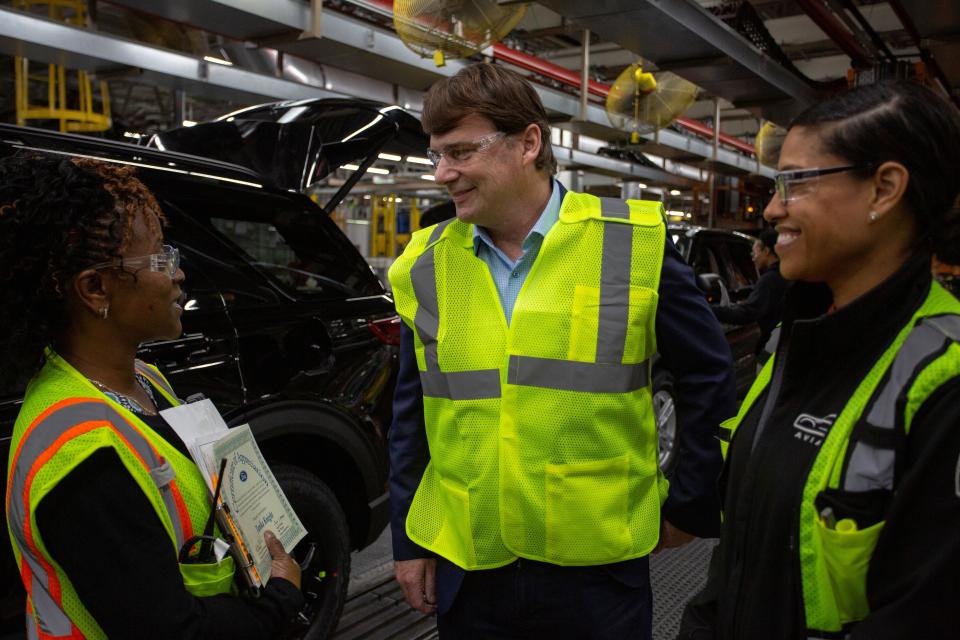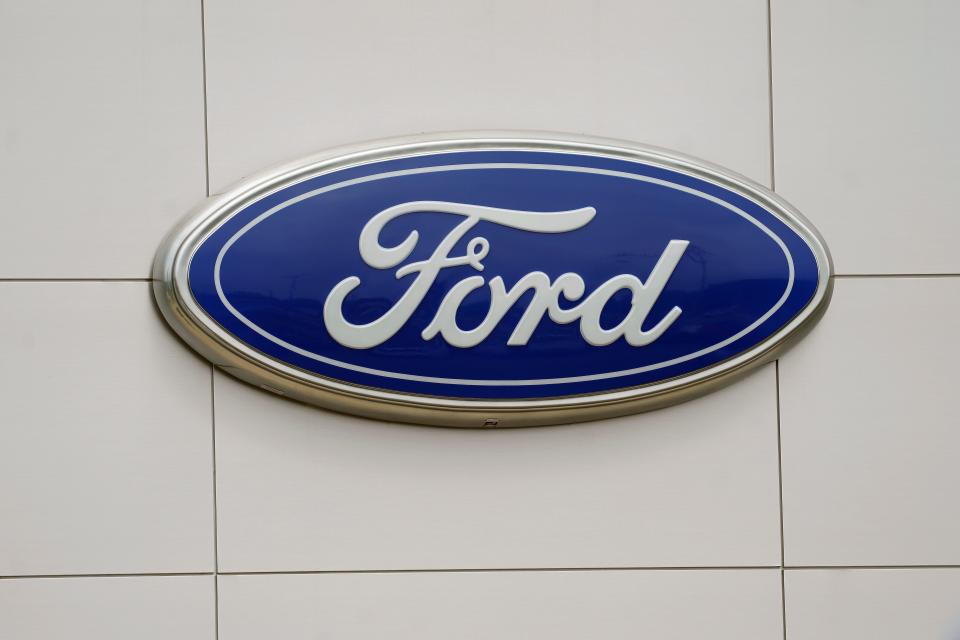Opinion: Ford CEO Jim Farley defends worker pay in op-ed as UAW contract negotiations near
This summer, at a time like no other in our industry, we will sit down with the new leadership of the United Auto Workers union to negotiate the next contract for our UAW-represented employees.
We at Ford are proud of our history of embracing our workers’ right to collective bargaining and working with the UAW. We share common goals — reaching a new deal that allows us to stay ahead of the changing industry landscape, protecting good-paying jobs in the U.S. and continuing to offer innovative and affordable products to our customers.

In fact, around this time last year, we announced plans to add more than 6,200 new union manufacturing jobs in the United States to our rolls. We launched a $1 billion commitment to upgrade the workplace experience in our plants — providing better food service, upgraded cafeterias and restrooms and more. We converted 3,000 temporary employees to full-time status, most ahead of schedule, and made all new hourly employees eligible for health care benefits from their first day on the job.
Some in our industry wondered if we were giving away bargaining chips we could have used to wrest “concessions” from the UAW in the contract negotiations that were still more than a year away. But we decided not to wait — because this was about people, not bargaining chips.
We’re focused on what it takes for all our employees to do their best work, because they come to work every day to build great products for our customers. What’s more, they step up for their communities in times of crisis. During the COVID-19 pandemic, for example, Ford men and women not only continued to build vehicles but also produced life-saving medical equipment like masks and ventilators.
We’ve heard some claims that our wages have remained stagnant, but the truth is that over the past eight years, UAW-Ford employees have received wage increases plus annual inflation bonuses of $1,500 per year, which exceeded the cumulative compensation gains they would have experienced under a straight cost of living adjustment. By the end of the current contract, 80% of all Ford’s UAW-represented employees will be making the top wage rate of $32 per hour. All-in, the average hourly UAW-represented employee at Ford earns $64 per hour in wages and benefits — or $112,000 per year. Their medical plans cover all but 3% of health care plan costs on average; members pay zero premiums and the vast majority also pay no deductibles. In fact, Ford is in the top 1% of all employer-sponsored medical plans for the lowest employee cost sharing.
And eligible UAW-represented employees earned a total of $42,000 in bonuses and profit-sharing during the past four years.
With more than 57,000 hourly employees working for Ford, we are the top employer of UAW-represented autoworkers. We’re proud of that fact. During the past four years, we have invested more than $7.4 billion and created and retained more than 14,100 jobs, well exceeding the commitments we agreed to during our last contract negotiations.
Other companies have made different choices, but we believe that a strong U.S. manufacturing workforce is a key to our success as a company, and to America’s economic success. All of our full-size trucks and nearly 80% of the vehicles we sell in America are assembled here — more vehicles than any other automaker. And Ford is America’s largest auto exporter.
So, we look forward to working with the UAW on the next labor contract – especially at a time when our dramatically changing industry needs a skilled and competitive workforce more than ever.
The demand for traditional internal combustion engine cars and trucks — like the Super Duty, Bronco and Mustang that have made Ford America’s best-selling brand again in Q1 — will thrive for years to come. But at the same time, we’re entering a world of new technologies, new business models, new customer expectations, new competitors, new skills, new global trade and supply chain patterns and new regulations.

Success in this new world will require us to adapt. Some jobs will be disrupted, and some will be created. Navigating that disruption means collaborating on what it will take for Ford to compete and win — striking the right balance between investing in our collective future and sharing the value we create together.
Building vehicles is hard work, but I’m constantly inspired by the pride I see in the faces of the men and women who do that work. That’s why Ford will enter the contract talks with the UAW ready and willing to work hard to reach a new deal.
It should be about collaboration, not concessions — creative ideas, not confrontation. We have important work to do together with the UAW. Americans — none more so than union members — are counting on us to keep an industry that employs more than 9.5 million people and drives $1 trillion dollars into the economy alive and well.
Jim Farley is the president and CEO of Ford Motor Co.
This article originally appeared on Detroit Free Press: Opinion: Ford's Farley defends worker pay as bargaining with UAW nears

